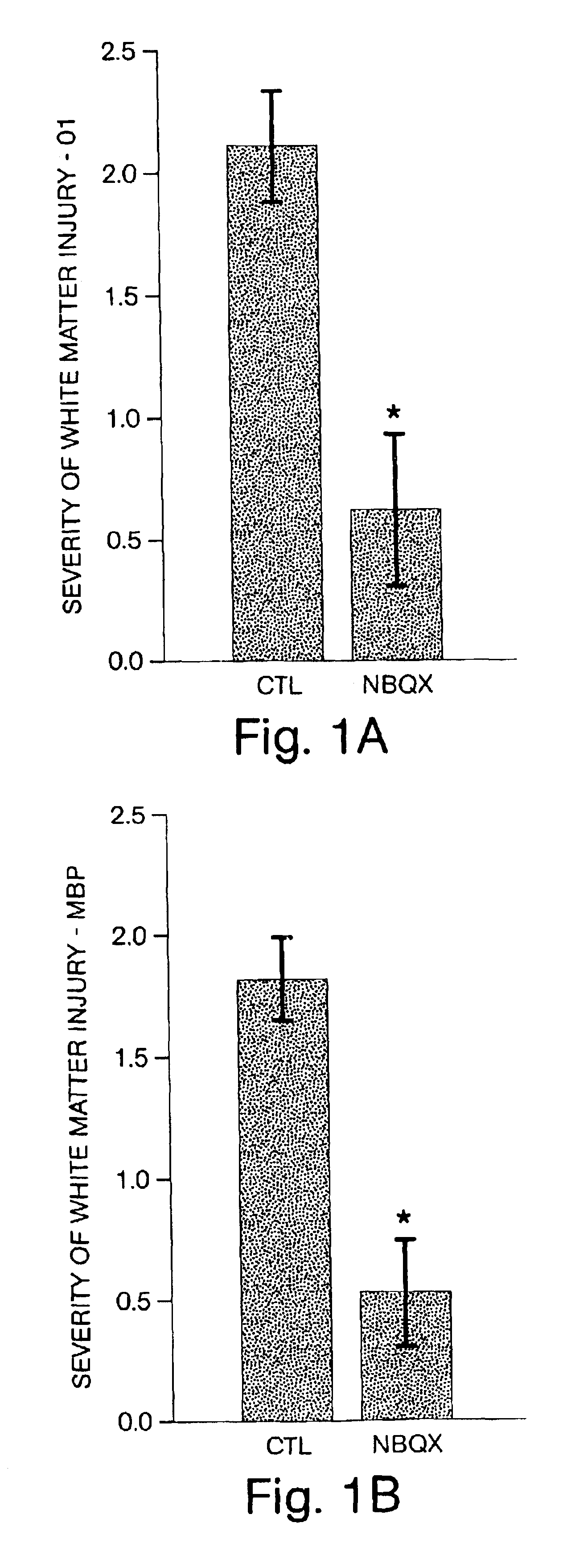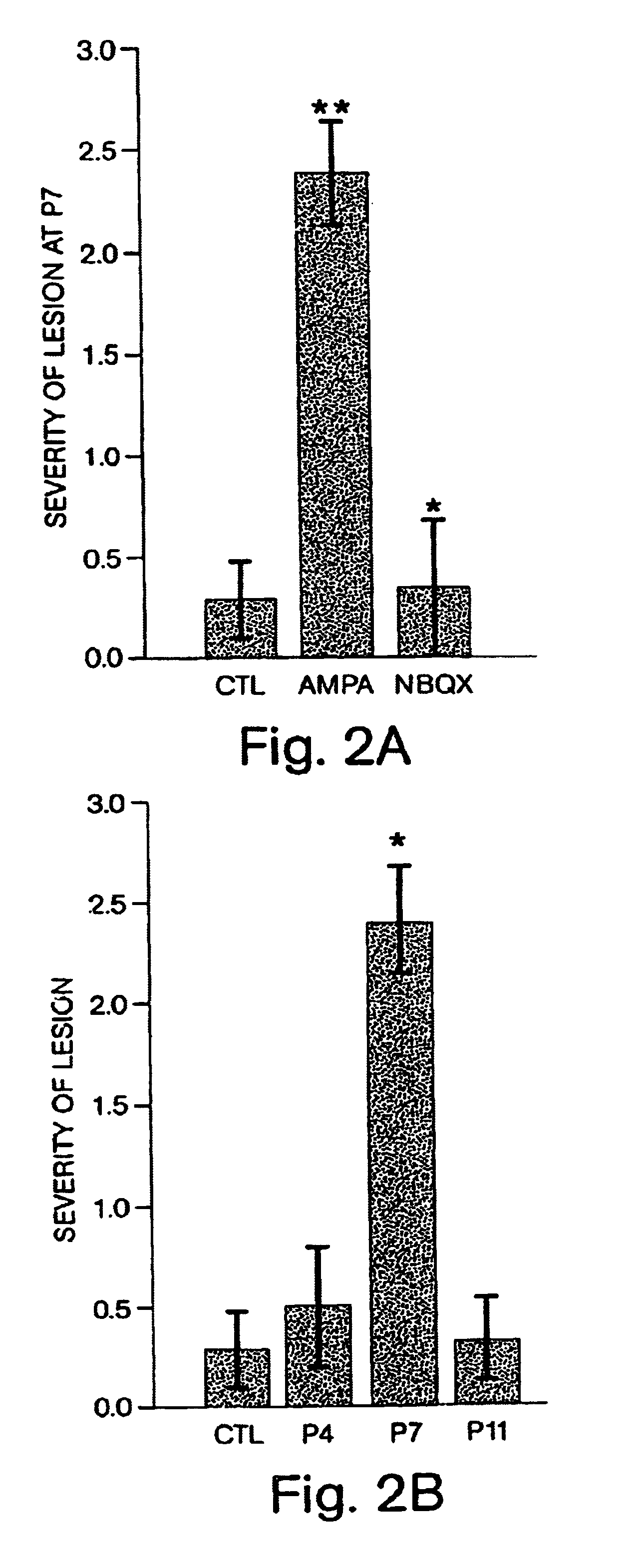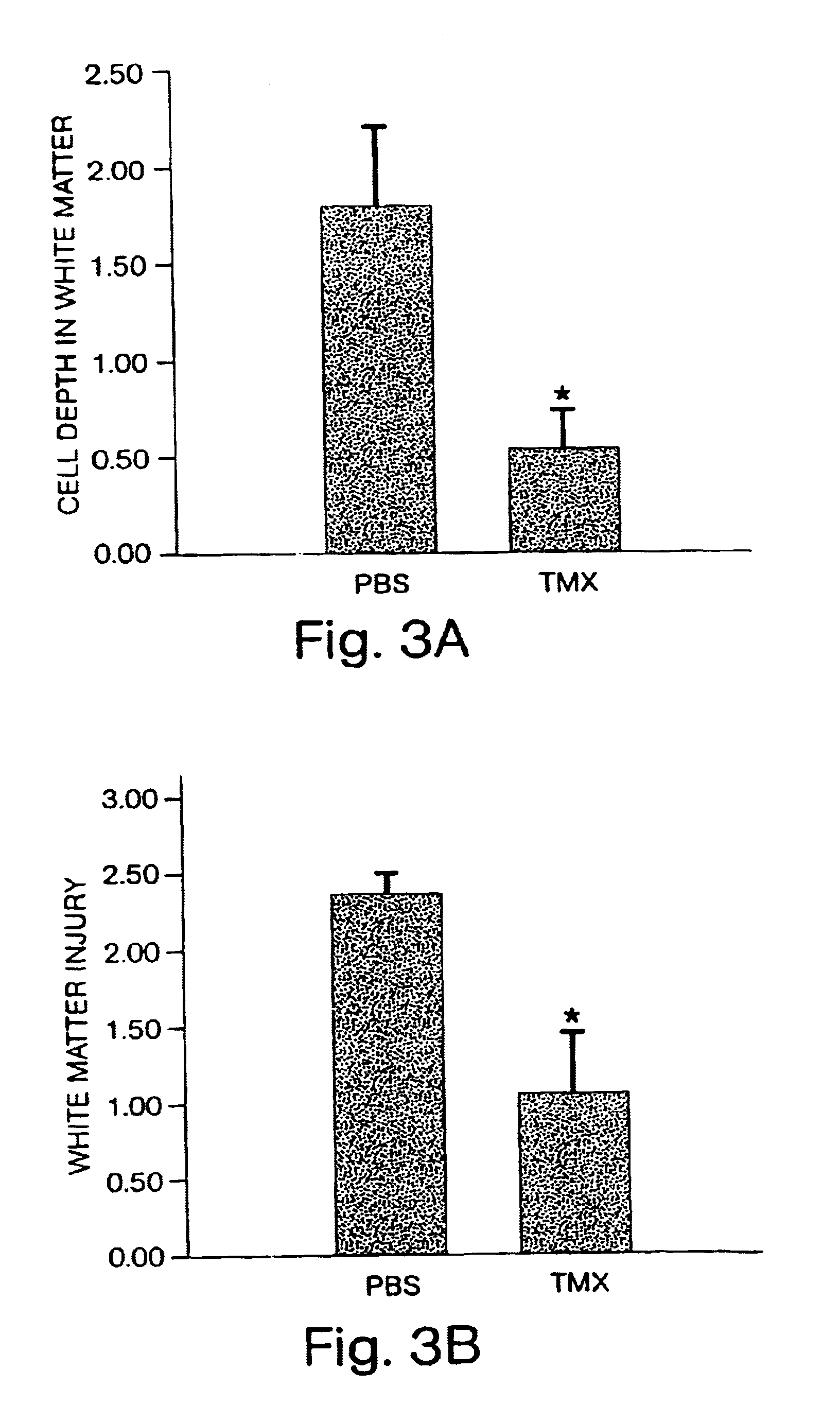Methods for modulating brain damage
a brain damage and brain damage technology, applied in the field of brain damage modulation, can solve problems such as neurodevelopmental deficits and cognitive delay, and achieve the effect of preventing injury
- Summary
- Abstract
- Description
- Claims
- Application Information
AI Technical Summary
Benefits of technology
Problems solved by technology
Method used
Image
Examples
example 1
NBQX-Mediated Inhibition of White Matter Injury
[0059]The methods used in this example are described in Follett et al. (2000) J. Neurosci. 20:9235-9241, incorporated by reference herein.
[0060]The purpose of this example was to examine in vivo the contribution of GluR-mediated toxicity to the selective loss of immature OLs in age-dependent cerebral white matter injury. First, the sensitivity of immature white matter to experimental hypoxia / ischemia at the age when the cerebral white matter of a rat is primarily populated by immature OLs was evaluated. To establish whether this injury was involved in GluR activation, the presence of AMPA GluRs on the vulnerable cells was confirmed and the protective efficacy of treatment with the non-NMDA antagonist 6-nitro-7-sulfamoylbenzo(f)quinoxaline-2,3-dione (NBQX) was subsequently assessed. Furthermore, the white matter selectivity and age-dependent nature of the GluR-mediated injury was assayed with glutamate agonist injections at different age...
example 2
Topiramate-Mediated Inhibition of White Matter Injury
[0073]Periventricular leukomalacia (PVL) is a principal pathology underlying cerebral palsy. Substantial evidence implicates ischemic white matter injury as an important cause of PVL. It has been previously demonstrated that hypoxia / ischemia in the immature rat brain leads to selective oligodendroglial (OL) injury during postnatal days five through seven (P 5-7). This selective white matter lesion can be blocked by systemic treatment with the non-NMDA ionotropic glutamate receptor antagonist NBQX, indicating a role for glutamate receptor-mediated toxicity in age dependent injury (set forth in Example 1). Topiramate is an FDA approved CNS drug shown to attenuate AMPA currents. Whether systemic administration of topiramate would similarly attenuate hypoxic / ischemic white matter injury in the immature rat model of PVL was addressed in this example.
Analysis of White Matter Cell Death
[0074]P7 rat pups underwent unilateral carotid ligat...
example 3
Use of Topiramate for the Treatment of Periventricular Leukomalacia
Materials and Methods
Subjects
[0081]Litters of male Long Evans rat pups (Charles River Laboratories, Wilmington, Mass.) were raised with dams in a temperature-controlled environment with 12 hour light-dark cycles. Pups underwent carotid ligation and hypoxia at post-natal-day (P)7. They were recovered on a thermal blanket at 33-34° C. (baseline temperature for P7 rats) and returned to their dam for 48-96 hours prior to sacrifice. Treated pups were given intra-peritoneal (i.p.) injections of 0.1 cc solutions of topiramate, NBQX or vehicle every 12 hours for 48 hours at P7 and P8 for treatment, control and normal development studies.
Effect of Topiramate on Normal White Matter Development
[0082]Oligodendrocyte maturation and myelin expression were evaluated in animals treated for 48 hours with topiramate as compared with normal development. The sub-cortical white matter was evaluated by immunocytochemistry with antibodies ...
PUM
 Login to View More
Login to View More Abstract
Description
Claims
Application Information
 Login to View More
Login to View More - R&D
- Intellectual Property
- Life Sciences
- Materials
- Tech Scout
- Unparalleled Data Quality
- Higher Quality Content
- 60% Fewer Hallucinations
Browse by: Latest US Patents, China's latest patents, Technical Efficacy Thesaurus, Application Domain, Technology Topic, Popular Technical Reports.
© 2025 PatSnap. All rights reserved.Legal|Privacy policy|Modern Slavery Act Transparency Statement|Sitemap|About US| Contact US: help@patsnap.com



